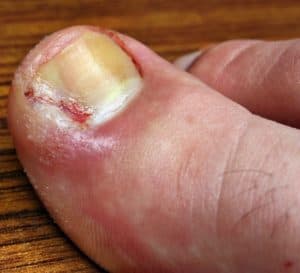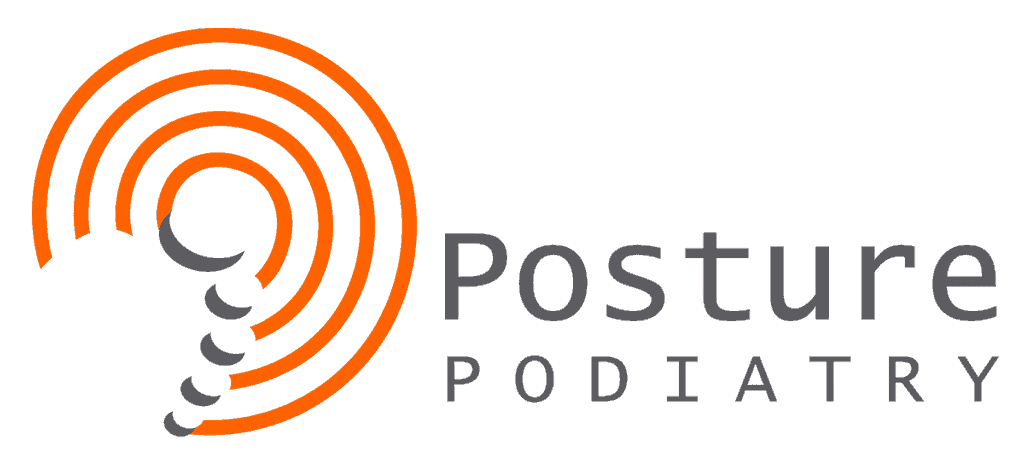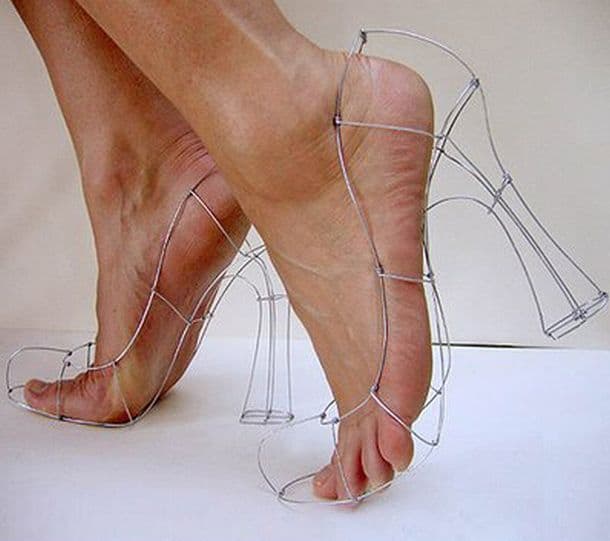Say Goodbye to Ingrown Toenail Pain
A Comprehensive Guide on How to Treat and Prevent Ingrown Toenails
Are you tired of dealing with the pain and discomfort of ingrown toenails? Look no further! In this comprehensive guide, we will provide you with all the information you need to treat and prevent ingrown toenails. Whether you’re prone to this common foot problem or simply want to avoid it in the future, we’ve got you covered.
In this guide, we will walk you through various methods of treating ingrown toenails, from simple toe nail cutting to professional medical interventions by qualified Podiatrists. We’ll also share preventive measures to keep ingrown toenails at bay.
You can book an appointment online or call 8362 5900 so one of our
experienced podiatrists at Posture Podiatry can help.
What is an Ingrown Toenail?
An ingrown toenail, medically known as onychocryptosis, can occur when part of the nail (often the edge) penetrates the skin causing pain, swelling, and sometimes infection during the normal growth of the nail. This can be due to trauma, poor nail cutting technique or an unusually curved shape of the nail. The nail is then open to infection. As the nail continues to grow and the infection can become worse the painful ingrown toenail develops.
While ingrown toenails can affect any toe, they most commonly occur on the big toe due to its prominence and the pressure it experiences from footwear. The nail’s growth pattern changes due to various factors, causing it to curve and penetrate the skin instead of growing straight out. This can lead to swelling, redness, and an array of symptoms that can disrupt daily activities. Understanding the nature of ingrown toenails is essential for both treatment and prevention, as early intervention can alleviate pain and prevent complications.
They can be incredibly painful and frustrating, making it difficult to walk or even wear shoes. Ingrown toenails can occur in individuals of all ages and can be exacerbated by certain lifestyle factors. The pain associated with this condition can be debilitating, making it crucial to identify the signs early and take appropriate action. But don’t worry, we’re here to help!

What Does An Ingrown Toenail Look Like?
The appearance of an infected ingrown toenail can vary significantly from very mild to very severe or somewhere in between. Some ingrown toenails will present with only slight redness and/or swelling while others may appear quite severe, inflamed, pussy and infected with a visible discharge. It’s important to have your problem assessed by a podiatrist and diagnosed as soon as possible in an effort to avoid the need for ingrown toenail surgery.
You can book an appointment online or call 8362 5900 so one of our
experienced podiatrists at Posture Podiatry can help.
What Causes Ingrown Toenails?
- Cutting nails incorrectly can cause nail problems. Several factors contribute to the development of ingrown toenails, with improper nail trimming being one of the most prevalent causes. When toenails are cut too short or rounded at the edges rather than straight across, it increases the likelihood of the nail growing into the surrounding skin. Nails should be cut along the contour of the toe or straight across. Never trim down the edges or pick at toe nails.
- Poorly fitted footwear or shoes which are too tight or small can restrict room for nail growth. Tight-fitting shoes or hosiery can place undue pressure on the toes, further encouraging the nail to dig into the skin. The resultant pressure on the nails can lead to ingrown nails.
- Incurvated nails. In some cases, genetic predisposition plays a role in the occurrence of ingrown toenails. Individuals with naturally curved or thick toenails may find themselves more susceptible, as their nail growth can lead to an increased likelihood of the nail penetrating the skin. Additionally, foot injuries or trauma—such as stubbing a toe—can disrupt the normal growth pattern of a toenail, making it more likely to become ingrown.
- Chubby toes are a trait seen in some individuals where the skin at the side of the toe is more likely to be traumatised or pierced by the nail as it grows straight out.
- Certain medical conditions can also contribute to the development of ingrown toenails. For example, diabetes and other circulatory issues can impair blood flow to the extremities, leading to complications when ingrown toenails occur. Maintaining proper foot hygiene and addressing any underlying medical issues is vital for reducing the risk of this painful condition.

Ingrown toenails often begin with pressure on the tip of the toe, and with growth of the nail, inflammation and pain begin to develop. Pressure from shoes or socks can aggravate the condition. If the skin is broken, infection can develop leading to possible throbbing or severe pain. Often the weight of a blanket is enough to cause discomfort.
You can book an appointment online or call 8362 5900 so one of our
experienced podiatrists at Posture Podiatry can help.
Signs and Symptoms of an Ingrown Toenail
The signs and symptoms of an ingrown toenail can vary in intensity depending on the severity of the condition. The most common initial symptom is localised pain and tenderness around the affected toe. As the condition progresses, the skin adjacent to the nail may become red and swollen, indicating inflammation. This discomfort can make it difficult to wear shoes comfortably or engage in physical activities without experiencing pain.
In some cases, pus may begin to drain from the site, signaling a potential infection. If the ingrown toenail is left untreated, the area can become increasingly infected, leading to more severe symptoms such as increased pain, swelling, and the formation of an abscess. The toenail may also appear discolored or distorted in shape, further indicating that intervention is necessary.
Individuals experiencing these symptoms should pay close attention to how their condition evolves. Early intervention can help alleviate pain and prevent further complications. If the symptoms worsen or do not improve, professional advice from a Podiatrist should be sought.
How To Treat an Ingrown Toenail?
Many options exist when it comes to ingrown toenail treatment. You need to be careful when determining just what to do for an ingrown toenail because, whilst it may only seem like a small problem, an infected ingrown nail can escalate into a much more serious problem and lead to blood poisoning. It’s important to seek professional podiatry advice if you suspect you have an infected ingrown toe nail.
Ingrown Toenail Home Treatment Options
At the first sign of pain you can check the corner of your nail to see if there are any visible sharp edges or spicules that are putting pressure on the surrounding skin. If the offending nail cannot be removed easily and safely, you should seek help from your podiatrist who will be able to remove the offending edge before the condition gets worse.
It is imperative to keep the toe clean with daily salt baths and dress with an antiseptic and a loose sterile absorbant dressing such as a sealed band-aid.
Professional Treatments for Ingrown Toenails
In cases where home treatment is ineffective, or the ingrown toenail is severe, professional podiatric intervention may be necessary. A podiatrist can assess the condition and recommend appropriate treatment. Many minor ingrown nails can be removed without surgery, however, if needed, one common procedure is the partial nail avulsion, where the problematic portion of the nail is surgically removed to relieve pressure and pain. This procedure is typically performed under local anesthesia and can provide immediate relief.
In more complicated cases, particularly when recurrent ingrown toenails occur, a nail avulsion may be recommended followed by a chemical treatment to prevent the nail from growing back. While this option may seem drastic, it can be a long-term solution for those who suffer from chronic ingrown toenails.
Following any professional treatment, it’s essential to adhere to the aftercare instructions provided by the Podiatrist. This may include keeping the area clean, changing dressings regularly, and avoiding tight footwear until the area has fully healed. Monitoring for signs of infection is also critical in ensuring a smooth recovery.
Podiatrists are professionally trained to deal with ingrown toenails just as your dentist is professionally trained to care for your teeth. The severity of the ingrown toenail will guide the podiatrist with their nail treatment options.

How to cut an ingrown toenail…
The nail edge is usually trimmed carefully with sterilised nail clippers and the offending nail edge can be carefully removed using skilled techniques acquired by podiatrist.
How to remove an ingrown toenail using local analgesia…
If standard removal of the ingrown toenail is not possible or inappropriate, your podiatrist may decide to remove the offending nail edge via resection under local anaesthetic to ensure complete removal and infection resolution occurs.
You can book an appointment online or call 8362 5900 so one of our
experienced podiatrists at Posture Podiatry can help.
How to stop ingrown toenails…
Long term management can involve a partial nail avulsion (PNA) with phenolisation. This is a nail surgery procedure which can be performed under local anaesthetic. Once the offending nail edge is removed a chemical will be applied to the nail edge and nail root to stop the nail regrowth. This nail surgery procedure is permanent and has proven to be very successful over many decades with only a small percentage of nails experiencing regrowth.
The permanent ingrown toenail surgery described above is usually the best way to cure ingrown toenails which have a tendency to repeatedly return.
What Happens To Untreated Ingrown Toenails?
Potential complications of untreated ingrown toenails
Ignoring an ingrown toenail can lead to a myriad of complications that can significantly impact one’s quality of life. One of the most common complications is an infection, which can occur when bacteria invade the broken skin surrounding the nail. An infected ingrown toenail may result in increased redness, swelling, and pus formation, potentially requiring antibiotics or surgical intervention to resolve.
In severe cases, untreated ingrown toenails can lead to cellulitis, a serious skin infection that can spread to deeper tissues and even the bloodstream. This condition is particularly concerning for individuals with compromised immune systems or pre-existing medical conditions, such as diabetes, that affect circulation and healing. If left unchecked, cellulitis can lead to hospitalization and more invasive treatments.
Chronic ingrown toenails can also result in permanent nail deformities, causing ongoing pain and discomfort. This can lead to changes in gait and difficulty walking, increasing the risk of falls and injuries. If there is severe localised infection, antibiotics may be required. Antibiotics can help settle the infection but without removal of the offending nail edge, the infection is likely to return.

In severe cases septicaemia or blood poisoning has been reported and has been known to be life threatening. This is why it’s important to address the cause of the problem and not just the symptoms. Therefore, timely treatment and intervention are essential to avoid these complications and maintain overall foot health.
You can book an appointment online or call 8362 5900 so one of our
experienced podiatrists at Posture Podiatry can help.
Who Should I Contact To Treat & Manage Ingrown Toenails?
Our experienced local Adelaide Podiatrists at Posture Podiatry have been trained specifically to deal with foot conditions including ingrown toenails. As tempting as it maybe, if a nail becomes problematic or ingrown, it is best to avoid self treatment or ‘hacking’ of the nail’. We advise you to seek professional podiatric help for safe and effective management.
All nails are different, all cases are unique. There may be various reasons why partial or complete nail removal may be required. Posture Podiatry have the experience, knowledge and skill to successfully manage ingrown toenails.
How To Prevent Ingrown Toenails?
Preventing ingrown toenails: Tips and tricks
Preventing ingrown toenails involves a combination of proper nail care and footwear choices. General advice given by our podiatrists to prevent ingrown toenails will usually include:
- Cutting your nails straight across – One of the most effective ways to avoid this condition is to trim toenails correctly. Always cut nails straight across rather than rounded, and avoid cutting them too short. This practice helps maintain the proper growth direction of the nail and reduces the risk of it growing into the surrounding skin.
- Filing the corners to remove any sharp edges – This helps to prevent sharp nail splinters which can penetrate the skin easily.
- Avoid shoes that place pressure on the nail – Choosing the right footwear is equally important in preventing ingrown toenails. Shoes that are too tight or narrow can place excessive pressure on the toes, promoting ingrown nails. Opt for shoes with a wide toe box that allows for adequate movement and comfort.
- Seek help by a trained registered Podiatrist – Regular toe nail management by a podiatrist can be an effective way to avoid ingrown toenails especially if you have Diabetes, thickened nails or peripheral vascular disease. Regular foot hygiene and inspection are also crucial in prevention. Keep feet clean and dry, and check for any signs of nail abnormalities or ingrown toenails, especially if you have a history of the condition. Prompt attention to any changes can help you address potential issues before they develop into more significant problems.
For the most part, ingrown toenails can be prevented and managed conservatively without surgery by our skilled podiatrists in our clinic rooms at Posture Podiatry. However, if an ingrown toenail is particularly bad or frequently recurring, the podiatrists at Posture Podiatry have other methods to help!
If this is you, book an appointment or call 8362 5900 so one of our experienced podiatrists at Posture Podiatry can assist. We’re here to help!
For more information about ingrown toenails or to schedule an appointment, please call 8362 5900 or BOOK ONLINE anytime by clicking here.
Conclusion: Taking care of your feet and preventing ingrown toenails
Taking proactive steps to care for your feet is essential in preventing ingrown toenails and maintaining overall foot health. By practicing proper nail trimming techniques, choosing appropriate footwear, and keeping feet clean and dry, you can significantly reduce the risk of developing this painful condition.
Awareness of the signs and symptoms of ingrown toenails is crucial, as early intervention can prevent complications and alleviate discomfort. Should you find yourself struggling with this issue despite your best prevention efforts, remember that professional help is available.
Ultimately, prioritising foot care and adopting healthy habits will not only help you say goodbye to the pain of ingrown toenails but will also enhance your overall well-being. Embrace these practices, and enjoy the comfort of healthy, pain-free feet.
You can book an appointment online or call 8362 5900 so one of our
experienced podiatrists at Posture Podiatry can help.




